

WHY? integration of reading and writing, motivation to read
WHAT? Use some of the materials below to create books. Your students
can write original poems for the books or copy favorite poems.
Big Book of Poems – Cut the sides off large paper grocery sacks and give
one to each child. Ask them to write a poem on the bottom and illustrate it
on the top. Put the children’s sacks together and bind with book rings to
make a big book.
Gift Bags – Cut the front and back off a gift bag. Cut paper the size
of the bag and give a sheet to each child. Encourage them to write a
poem about their birthday, going to a party, a present, etc. Staple the
poems in between the front and back of the bag.
Cookie Poem – Cut the front and back off a cookie box or cereal
box. Cut paper the size of the box and give a sheet to each child.
Children write a poem and illustrate it. Put the children’s papers
in between the front and back of the box and bind with a book ring
to make a book.
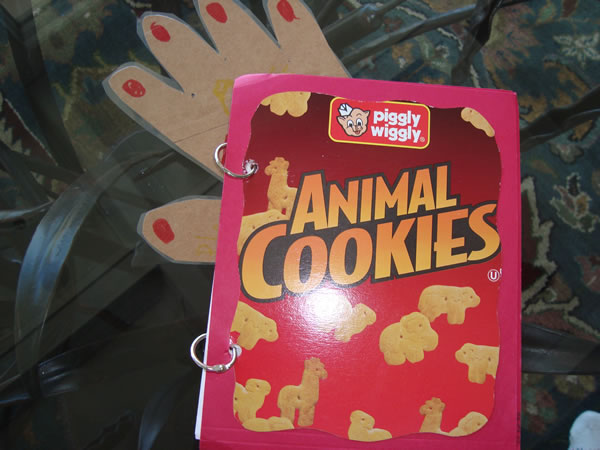

Let children write poems, rhymes, or riddles about concepts you are studying in science or social studies. They could write a poem about an animal, season, plant, community, historical character, etc.
Around the room – Write the first line of a poem on a sheet of paper.
As you pass the sheet of paper around the room, each child adds
another line to the poem.
Hint! You could also put the first line of a poem on the board or
on a poster and let the children add to it throughout the day.
Found poem – Children cut out words from a magazine or
newspaper and then glue these on a piece of paper to create a
poem.
Out and About Poems – Take children out on the playground for this
activity. They will need to take paper, pencils, and something to
write on. Have them “sit and watch.” After they are inspired by what they observe, invite them to write a poem.
Raps – If children are into rap music, have them take a nursery rhyme
and turn it into a rap. They could also write original raps relating to
a unit of study, holiday, etc.
Songs – Let children “read” the words to songs. You could also let them
“sing” a poem. Give them the opportunity to create a poem and then
sing it.
Rime Rhymes – Give every child a rime (all, at, ike, oat, eep…). Have them brainstorm words they can make from the rime and then write a rhyme with their rime.
Parodies of Familiar Rhymes – Let children take traditional nursery
rhymes and songs and change the words, endings, characters, etc.
Grab Bag Poems – Each child brings an interesting object from home.
Ask them to put their object in a sack so no one can see it. Children
exchange sacks and then write a poem about what is in the bag.
Partner Poems – Divide children up into groups of two and challenge them to write a poem with their partner. (Small groups of 4 could also
be used to write and illustrate poems.)
Giant Poems – Take children outside and let them write poems on the sidewalk with chalk.
Teeny Tiny Poems – Cut paper into 3” squares. Staple four squares
together to make a small book. Ask children to write “tiny” poems in their “tiny books.”
Candy Poems – Save candy containers from mini M&Ms, breath mints, etc. Ask children to write poems about “sweet things” and store them in the empty candy containers. Have children share their poems with their classmates.
Spring Poems – Write poems about spring and fold them up to fit into plastic eggs. Keep the eggs in a basket and encourage children to read each other’s poems.
Long Poems – Give each child a strip of paper 11” long and 1 ½” wide. Have them write a long sentence or rhyme on their strip of paper. Roll it up and tie it with a ribbon.
WHY? motivation to read and write, editing skills
WHAT? construction paper, art media, binding machine or stapler
HOW? After students have had many opportunities writing poems, suggest that
the class “publish” their own poetry book. Let each child choose one
poem that they are proud. Work in small groups or with a partner to
enable the children to edit their poems. Have children type their
poems on a computer and illustrate with a black pen. Run off a
copy for each child. Let them decorate a cover from construction
paper and bind or staple to make copies of their classmates’ poems.
Add a page for the “dedication,” “copyright date,” “publisher,”
and “authors and illustrators.”
Hint! Let children vote on who they would like to dedicate their
poetry book to.
The copyright date would be the day you complete the book.
The publisher would be your school.
Have all the children sign their names as contributing
authors and illustrators.
You could also let the children make a table of contents, number the
pages, add an ISBN number and bar code, etc.
Make sure you put a copy of your book in the school library!
WHY? motivation to read and write, cooperation
WHAT? paper cut in 10” squares, yarn, glue, colored butcher board paper,
markers, crayons
HOW? Give each child a square and let them write an original poem or
rhyme on the square. Let them decorate a frame around their
poem with crayons. Glue the children’s squares to a large sheet
of bulletin board paper. Be sure to leave at least an Inch between the
squares. Take 12” pieces of yarn and tie them in bows.
Glue the bows between the squares so it will look like a quilt.
Hint! You can also punch holes in the corners of the squares and tie
them together with yarn.
MORE? Use this technique to write poems about holidays, seasons, or
units of study.
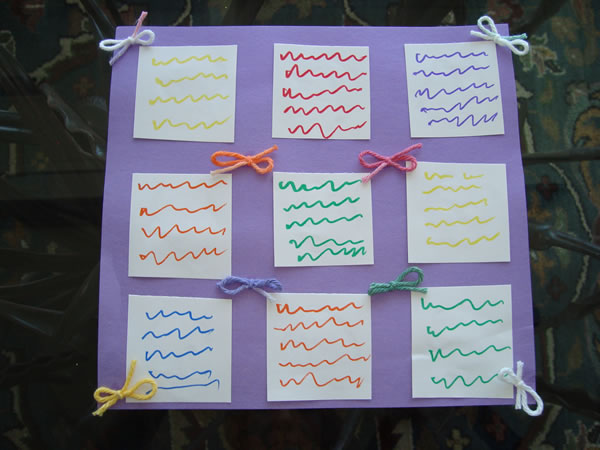
WHY? motivation, creativity
WHAT? paper, colored pencils, pens, markers, crayons, samples of medieval
writing
HOW? Show children pictures of writing from medieval times. Call their
attention to the detail. How does the art compliment the words?
They didn’t have copy machines or printers, so how long do you think it would take to do everything by hand? Sometimes the scribes would spend
their whole lives copying manuscripts and drawing. Would you like to do
that? Let children write an original poem or copy a poem on a sheet of paper. Then let them add details with curlicues and decorations.
MORE? Make paper that looks like parchment by soaking copy paper in coffee or tea for about ten minutes. Hang to dry and then it will look like
parchment paper. You can also let the children wad up the paper
several times before soaking it and the paper will look wrinkled!
WHY? creativity, motor skills, motivation
WHAT? Use one the materials and activities below to help children make poems
come alive through the arts.
Illustrations – After listening to a poem, have children close their eyes
and make a picture of it in their heads. Then let them draw that picture on
paper with crayons, markers, or colored pencils.
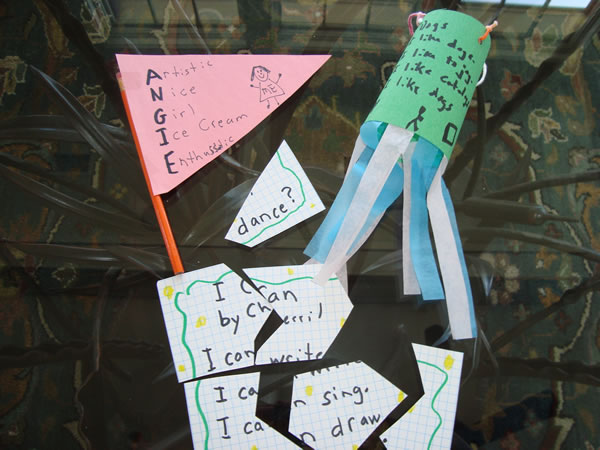
WHY? multiple intelligences, creativity
WHAT? poems
HOW? After reading poems several times, let children suggest movements to
enhance the poems.
Sound Effects - Let children listen to a poem and add sound effects.
(Wind, rain, animal sounds, etc.)
Pantomime - Divide children into small groups and let them choose a
poem that they would like to present to the class. One child could read while the others pantomime or create a human statue.
Movie - Make a video recording of the children dramatizing poems,
and then play it back for them to enjoy. You could also let students
take the video home to share with their families.
Music - Children select a favorite poem and then find music that reminds
them of the poem. Play the music in the background as you read
the poem.
WHY? rhythm, creative expression, exercise
WHAT? poems, songs, paper towel rolls, paper plates, rhythm instruments
HOW? Encourage children clap, dance, snap, hop, march, and make other
movements as you read poems. Let children make up original motions
or dances for poems.
MORE? Each child will need 2 paper towel rolls to make rhythm sticks. Let them
paint their rolls or decorate them with markers. Use the rolls to keep
rhythm by beating them on the floor or tapping them together as poems
are read or recited.
Paper plates can also be used like rhythm instruments to keep the beat.
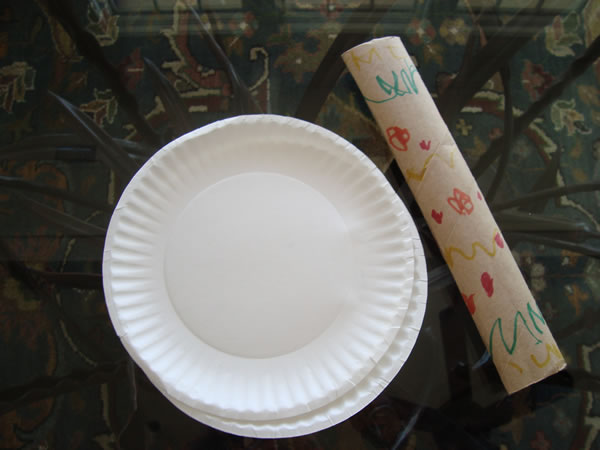
Microphone – Make a microphone from a paper towel roll. Cover the roll with aluminum foil and attach a piece of string.
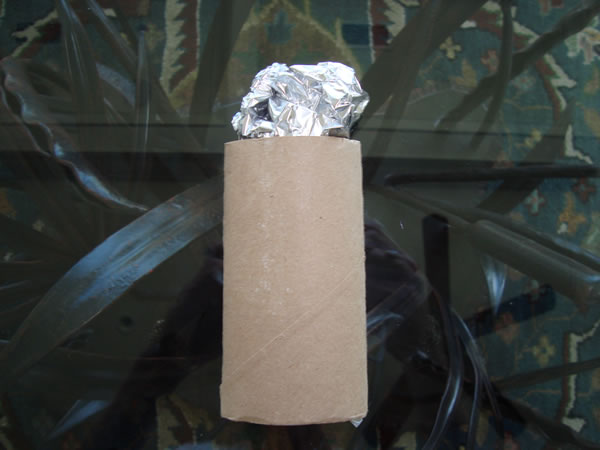
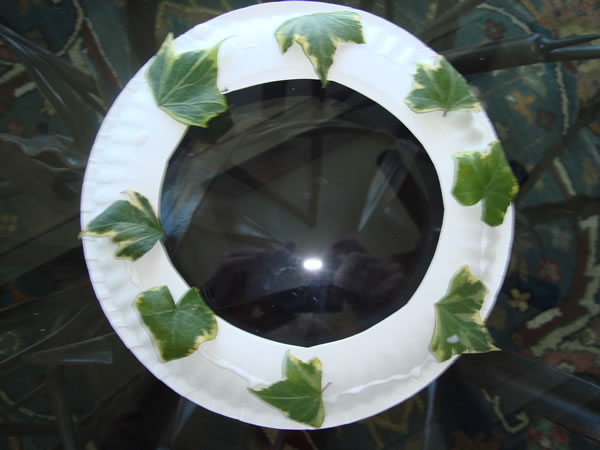
WHY? parental involvement; modeling
WHAT? no materials are needed
HOW? Ask children to go home and interview their parents about poetry.
Involve them in generating questions they would like to ask their parents.
Do you like poems? Why? Why not?
What’s your favorite poem?
Do you have a favorite poet?
Did you learn any poems when you were a child?
Do you have a poetry book? Let children share results of parent surveys with classmates.